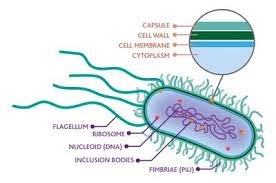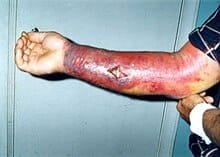What is Bacterial Diseases?

Bacterial diseases are illnesses caused by bacteria, which are tiny, single-celled organisms that live almost everywhere in soil, water, and even inside our bodies. While some bacteria are helpful, others can cause infections and make animals or people sick when they invade the body and multiply. Bacterial diseases can affect various parts of the body, leading to symptoms like fever, pain, swelling, or even more serious health issues if untreated.
Table of Contents
Bacterial diseases can spread in different ways: through direct contact with an infected person or animal, through contaminated food or water, or even through the air. Fortunately, many bacterial diseases can be treated with antibiotics, which help kill or slow the growth of bacteria. Vaccination, good hygiene, and proper sanitation are also effective in preventing the spread of bacterial diseases.
Hemorrhagic Septicemia (HS)
HS, is a serious bacterial infection that commonly affects cattle and buffaloes. It’s caused by bacteria called Pasteurella multocida and spreads easily, especially during the rainy season when animals are close together. HS can be deadly if not treated quickly because it causes severe infection in the lungs and other organs.
Animals with HS usually get a high fever, trouble breathing, swelling around their throat, and frothy fluid from their noses. It spreads through contact with sick animals or contaminated water and food. The best way to prevent HS is to vaccinate animals before the rainy season and to keep sick animals isolated to avoid spreading it. Early treatment with antibiotics can help, but because HS moves fast, it’s important to act quickly.
Black Quarter (BQ)
Black Quarter, also known as Blackleg, is another bacterial disease affecting mainly cattle, buffaloes, and sometimes sheep. It’s caused by bacteria called Clostridium chauvoei, which live in soil and can survive there for years. Animals can catch BQ when they eat contaminated soil or if the bacteria enter through cuts or wounds. Younger animals are more at risk, and the disease often leads to sudden death.
Signs of BQ include high fever, stiff muscles, and swelling, usually in the legs or shoulders. The swelling can turn black, which is why it’s called “Black Quarter.” BQ spreads in muscle tissue and releases toxins, causing pain and damage. BQ can be prevented with an annual vaccine. While treatment is challenging, sometimes antibiotics work if the disease is caught early. To reduce the risk, it’s best to keep animals vaccinated and to maintain clean grazing areas.
Anthrax

Anthrax is a serious bacterial disease that can infect both animals and humans. It’s caused by Bacillus anthracis, bacteria that form spores and survive in soil for years. Animals like cattle, sheep, and goats can get anthrax from grazing in contaminated areas. People can also catch anthrax from handling sick animals or infected animal products.
There are different types of anthrax, each with its symptoms. In animals, it usually causes sudden death, with signs like fever, trouble breathing, and blood from the nose or mouth. In humans, anthrax can infect the skin, lungs, or stomach, causing anything from skin sores to breathing problems. Anthrax can be prevented by vaccinating animals, and in areas where it’s common, there are strict rules to prevent outbreaks. Antibiotics work if anthrax is treated early, but prevention is the best defense since it spreads so fast.
Mastitis

Mastitis is an infection of the udder that affects dairy animals like cows, goats, and sheep. It’s usually caused by bacteria such as Staphylococcus or Streptococcus that enter through the milk ducts, causing inflammation and infection. Mastitis doesn’t usually threaten the animal’s life, but it can be painful and lead to lower milk production, which is important for farmers.
Animals with mastitis often show swelling, redness, and warmth in the infected udder, and the milk may be lumpy or smell bad. The infection spreads through poor milking practices, unclean equipment, or dirty living areas. Mastitis can be treated with antibiotics, but good hygiene, clean milking tools, and sanitary living spaces are the best prevention. Many farmers also use gentle milking techniques to protect the udder and reduce the risk of infection.
Summary
Each of these bacterial diseases HS, BQ, Anthrax, and Mastitis affects animals differently, but they all have serious impacts on animal health and farm productivity. HS, BQ, and Anthrax can be life-threatening if not treated quickly, while Mastitis primarily reduces milk production. Vaccinating, practicing good hygiene, and handling animals properly can help prevent these diseases. For all bacterial infections, early detection and quick treatment are crucial for saving the animals and stopping the spread.
Frequently Asked Questions (FAQ)
What is Bacterial Diseases?
Bacterial diseases are illnesses caused by bacteria, which are tiny, single-celled organisms that live almost everywhere in soil, water, and even inside our bodies.
List the bacterial diseases ?
Some Examples of Bacterial diseases are
Tuberculosis
Cholera
Typhoid Fever
Tetanus
Plague
Anthrax
Hemorrhagic Septicemia (HS)
Black Quarter (BQ)
Mastitis
Leptospirosis
Related Articles

